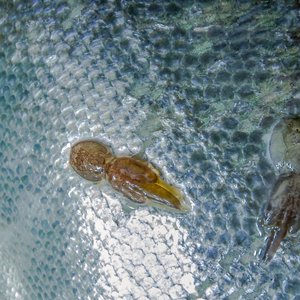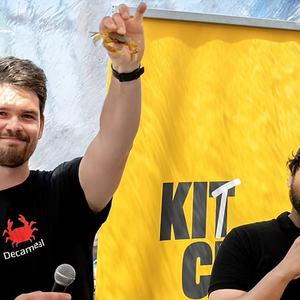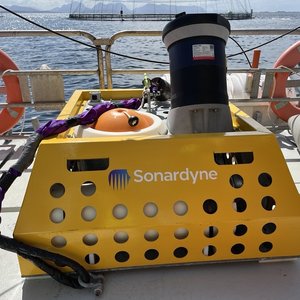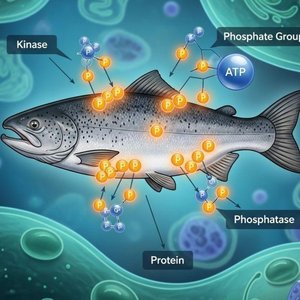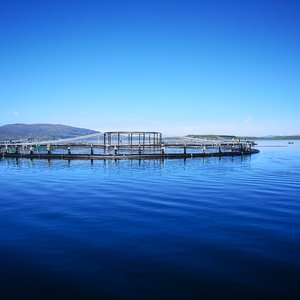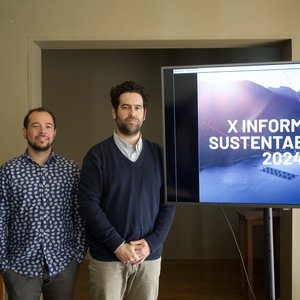Shrimp virus gets the silent treatment
Kathy La Fauce and cricket
Researchers at James Cook University have developed a virus ‘silencing’ technique that could save the Australian shrimp industry from millions of dollars in losses.
PhD student Kathy La Fauce has spent three years investigating how to reduce the spread of a virus that is robbing Australian aquaculture farms of their shrimp.
Penaeus merguiensis densovirus (PmergDNV) is the Australian strain of hepatopancreatic parvovirus, which stunts the growth of prawns, leaving them vulnerable to other infections, and often results in death.
Currently shrimp cannot be vaccinated against any virus, so if a pond is infected the farmer has to put up with the losses, dry out the pond and re-stock.
Through RNA interference – a gene ‘silencing’ mechanism that occurs naturally in plants and animals – Kathy has been able to identify the virus genes responsible for the replication of PmergDNV within an animal and, thanks to an orchestra of crickets, has developed a method to reduce its ability to replicate.
“Prawns carry other viruses which affect the results of my experiment so we moved to insects as a model because of their identical biosynthetic machinery,” said Kathy. “Densoviruses are also known to occur in crickets so they were the obvious choice.”
By cloning a sequence of the replicating gene of PmergDNV and injecting it into a cricket, Kathy has been able to protect it against future infections with the live virus.
“The copied sequence binds to the same sequence in the live virus and the infected animal’s enzymes destroy it, which stops or ‘silences’ gene expression and prevents the animal suffering any of the affects of the virus,” she said.
The technique could have massive implications not only for the Australian aquaculture industry but for the international industry.
“We knew this virus was in farms but didn’t know what impact it was having on prawns so we scanned 190 ponds – 28.5 thousand larvae – between 2007 and 2008. We estimated that by reducing the levels of PmergDNV using this new technique, productivity could increase by at least 14%. The Queensland industry makes $46.5million each year, so that’s an increase of $6.5million if farmers are growing susceptible species.”
Supervisor Associate Professor Leigh Owens said Kathy’s project had gone brilliantly. “She has had four papers published from her PhD and three more in review in less than three years of her candidature. A rising star, if ever I saw one,” he said.
Kathy, from JCU’s School of Veterinary and Biomedical Sciences, is the first in Australia to sequence PmergDNV so she had the privilege of naming it.
“It’s not everyday you get to do something like that so I am honored,” said the 25-year-old. “Unfortunately I couldn’t call it ‘LaFaucevirus’ as there is a protocol for this kind of thing.”
The next step is to work out how to deliver the sequenced PmergDNV gene into thousands of shrimp at a time.
“We think we can grow it in bacteria, put it into food and let it reproduce thousands of times over – that way, the prawns will eat the food and at the same time ingest the sequenced gene,” said Kathy.
She is currently awaiting the outcome of a grant application to continue this work.
“I’ve been working on this right from the start so it will be nice to be able to see it through to the end point,” she said.
Kathy’s thesis is entitled: RNA interference as an antiviral mechanism against Penaeus merguiensis densovirus.




